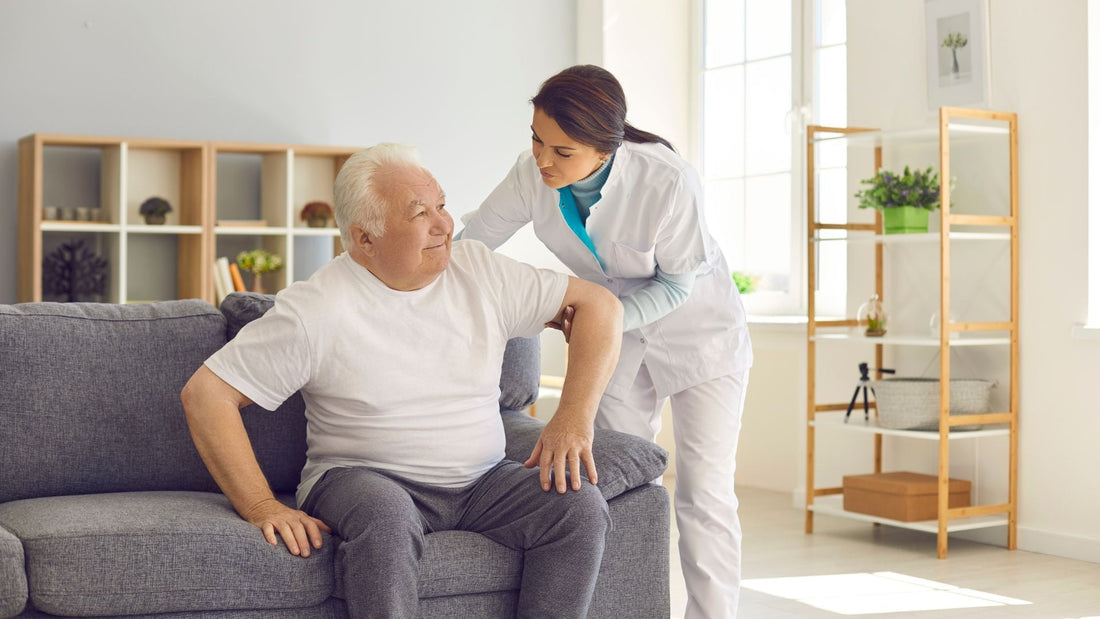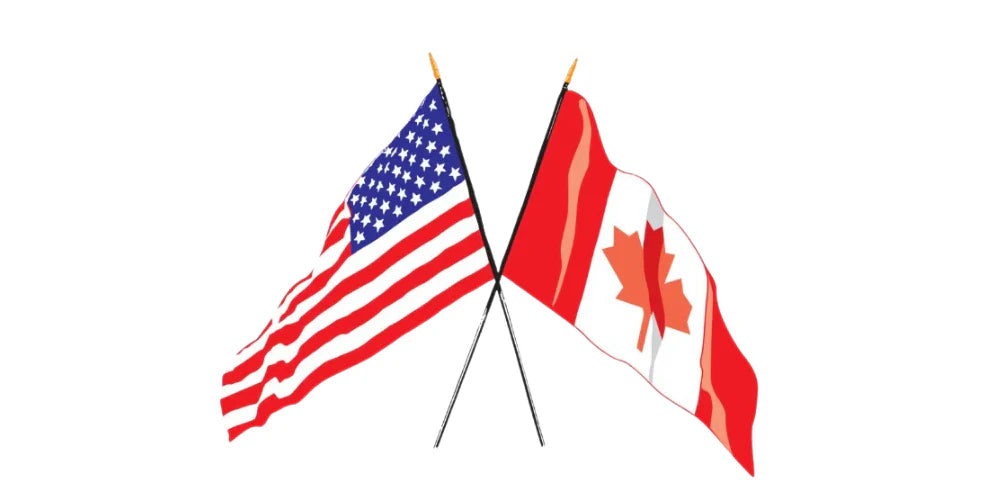
Everyday Confidence: How to Live Comfortably with Urinary Incontinence
Share
Living with urinary incontinence doesn't mean putting your life on hold. Whether you're dealing with post-surgery recovery, age-related changes, or ongoing bladder control issues, you can still travel, socialize, exercise, and live fully. The key is having the right strategies, tools, and mindset to manage things on your terms.
Let's talk about what actually works in daily life, not just in theory. This is about practical confidence, the kind that lets you leave the house without anxiety and enjoy activities without constant worry.
Understanding Your Baseline
Before we dive into lifestyle tips, it helps to understand your specific situation. Urinary Iincontinence isn't one-size-fits-all. Some men experience occasional stress incontinence (leaks when coughing, laughing, or exercising), while others deal with urge incontinence (sudden, strong needs to urinate) or mixed types.
Tracking your patterns for a week or two can be incredibly helpful. Notice when leaks tend to happen, what triggers them, and how much fluid you're losing. This information helps you prepare more effectively and choose the right management tools for different situations.
The Right Products Make All the Difference
Incontinence Clamps and External Devices
For many men, particularly those recovering from prostate surgery, a penile clamp offers discreet, reliable protection during activities. The Pacey Comfort Cuff stands out as one of the best incontinence clamp options because it's designed with both function and comfort in mind.
Unlike traditional penis clamps that can feel restrictive or uncomfortable, modern incontinence clamps like the Pacey Cuffuse adjustable compression that you can customize throughout the day. The goal is gentle pressure that prevents leaks without cutting off circulation or causing discomfort.
When choosing the best incontinence clamp for your needs, look for:
-
Adjustability: Your needs change throughout the day. Morning coffee might require different settings than an afternoon walk.
-
Soft materials: Foam padding and skin-friendly fabrics prevent irritation during extended wear.
-
Easy release: You should be able to remove it quickly when you need to urinate.
-
Discreet profile: A low-profile penile clamp won't create visible lines under clothing.
Many men find that using an incontinence clamp gives them the confidence to return to activities they'd been avoiding, whether that's golf, going to the gym, or attending social events. Read success stories from men who've regained their freedom with the right incontinence management tools.
Protective Underwear and Pads
Even with a penis clamp, having backup protection is smart. Modern absorbent products have come a long way from the bulky options of the past.
Look for underwear specifically designed for men, with absorbent material positioned where you actually need it. The best options feel like regular underwear, not medical devices. Some men prefer disposable products for convenience when traveling, while others choose washable, reusable absorbent pads for daily use at home.
The Pacey Cuff ActiveGuard is a lightweight, machine-washable absorbent pad that works well for lighter incontinence or as backup protection. These pads fit into regular underwear and can be changed throughout the day as needed.
For optimal comfort and support, consider breathable boxer briefs that hold your penile clamp and backup pads securely in place while keeping you cool and comfortable throughout the day.
Wardrobe Strategies That Work
Your clothing choices can either add stress or make management easier. Here's what actually helps:
Fabric Matters
Darker colors naturally conceal any minor accidents better than light fabrics. Navy, black, dark gray, and deep browns become your friends. But beyond color, consider patterns. Subtle prints, textures, or heathered fabrics hide potential stains far better than solid colors.
For pants, avoid very thin or clingy materials. A bit of structure in the fabric, like you'd find in chinos, jeans, or textured dress pants, offers better coverage than lightweight cotton or linen.
Layering for Security
Strategic layering isn't just for cold weather. A longer shirt, sweater, or jacket tied around your waist provides both physical and psychological security. If you're wearing an incontinence clamp or protective underwear, an untucked shirt or light jacket ensures nothing shows through.
Quick-Change Considerations
Elastic waistbands, drawstring pants, and simple closures make bathroom trips faster and easier. If you're using a penile clamp, you need to be able to remove and reapply it quickly. Wrestling with complex belt buckles or tight buttons adds unnecessary stress to an already urgent situation.
Travel and Outings Without Anxiety
The Emergency Kit
Keep a small bag in your car, office, or anywhere you spend regular time. Inside:
-
Extra protective underwear or pads
-
A spare Pacey Cuff and Comfort Band if you use one
-
Wet wipes or personal cleansing cloths
-
A small plastic bag for discreet disposal
-
Hand sanitizer
-
A change of underwear and pants (just in case)
This kit lives somewhere accessible but private. Just knowing it's there reduces anxiety significantly.
Planning Ahead
Before heading somewhere new, do a quick bathroom location check. This isn't about being paranoid, it's about being prepared. Most smartphone maps can show public restrooms. Many apps are specifically designed to locate accessible facilities.
For longer outings:
-
Time your fluid intake: Drink normally, but be strategic about large amounts before events or travel.
-
Scout the venue: Arriving 10 minutes early to locate restrooms removes one source of stress.
-
Have an exit strategy: Knowing you can leave if needed paradoxically makes you less likely to need to.
Air Travel and Road Trips
Flying with incontinence takes extra planning but is absolutely doable. The best incontinence clamp options, like the Pacey Comfort Cuff, are TSA-friendly since they're not metal. Pack your emergency kit in your carry-on, never checked luggage.
Request an aisle seat so bathroom access is easy. On long flights, limiting caffeine and alcohol helps, since both are bladder irritants and diuretics.
For road trips, plan stops every 90-120 minutes. This regular schedule often works better than waiting until urgency hits. Highway rest stops, major gas stations, and fast-food restaurants are reliable options.
Mental and Emotional Strategies
The psychological impact of incontinence often exceeds the physical challenge. Many men report anxiety, embarrassment, and social withdrawal. These feelings are valid, but they don't have to control your life.
Reframe the Narrative
Incontinence is a medical condition, not a personal failing. You wouldn't be embarrassed about needing glasses or taking blood pressure medication. This is similar, it's a body function that needs management.
Millions of men deal with this. Post-prostatectomy incontinence alone affects 50-75% of men in the initial months after surgery, with many experiencing some level of leakage for extended periods. You're not alone, even though it can feel isolating.
Build Your Confidence Gradually
If anxiety is keeping you home, start small. Run a quick errand close to home. Meet a friend for coffee at a familiar place. Each successful outing builds confidence for the next.
Using reliable tools like a well-fitted urinary incontinence clamp can be the difference between staying home and going out. Many men describe their penile clamp as "freedom," because it allows them to stop obsessing about potential leaks and start living again.
Consider Professional Support
If anxiety about urinary incontinence is significantly affecting your quality of life, talking to a therapist who specializes in chronic health conditions can help. Cognitive behavioral therapy has proven effective for managing anxiety related to medical conditions.
Support groups, whether in-person or online, also provide valuable perspective. Hearing how other men manage the same challenges normalizes your experience and often provides practical tips you hadn't considered.
Breaking the Silence
One of the biggest barriers men face with incontinence is the stigma. We're generally not great at talking about vulnerable health issues, and bladder control problems hit particularly close to masculine identity for many.
But here's the thing: secrecy increases shame. Talking about it, even with just one trusted person, reduces the emotional burden significantly.
Who to Tell
You don't owe everyone an explanation, but having a few people in the know makes life easier:
-
Your partner: They likely already sense something's going on. Being open allows them to support you properly.
-
Close friends: You might be surprised how many of your peers are dealing with similar issues.
-
Your doctor: Never downplay symptoms or struggle in silence. Your healthcare provider needs full information to help effectively.
How to Bring It Up
Keep it simple and matter-of-fact. "I'm dealing with some bladder control issues after my prostate surgery" or "I'm managing incontinence, so I need to stay near restrooms" is often enough.
Most people respond with understanding and empathy. Those who don't aren't people whose opinions should matter to you anyway.
Daily Habits for Better Management
Pelvic Floor Exercises
Kegel exercises aren't just for women. Strengthening your pelvic floor muscles can significantly improve bladder control over time. The key is consistency.
To find the right muscles, try stopping urination midstream (just once to identify them, don't make this a regular practice). Those are your pelvic floor muscles. To exercise them:
-
Tighten those muscles and hold for 3-5 seconds
-
Relax for 3-5 seconds
-
Repeat 10 times, three times per day
You can do these anywhere, while driving, watching TV, or working. Results take weeks to months, but most men see improvement with regular practice.
Bladder Training
Gradually increasing the time between bathroom visits can help retrain your bladder to hold more comfortably. This works best under guidance from a healthcare provider or pelvic floor physical therapist.
The process involves scheduled bathroom trips, gradually extending the time between them. It requires patience but can reduce urgency and frequency over time.
Diet and Fluid Management
Certain foods and drinks irritate the bladder: caffeine, alcohol, citrus, tomatoes, artificial sweeteners, and spicy foods are common culprits. You don't necessarily need to eliminate everything, but notice what affects you personally.
Stay hydrated, but spread fluid intake throughout the day rather than drinking large amounts at once. Contrary to instinct, restricting fluids too much actually makes incontinence worse by concentrating urine, which irritates the bladder.
Living Fully, Not Carefully
The goal isn't just managing incontinence, it's maintaining your quality of life. That might mean using a penis clamp during your daughter's wedding so you can dance without worry. It might mean packing extra absorbent supplies for a camping trip you'd otherwise skip. It might mean having honest conversations you'd rather avoid.
Whatever it looks like for you, the tools exist to help. Modern urinary incontinence clamps like the Pacey Cuff offer reliable, comfortable protection throughout the entire day. Discreet protective products mean leak protection backup is always available. And increasingly, men are talking openly about these challenges, reducing stigma for everyone.
IUrinary incontinence is something you manage, not something that defines you. With the right approach, tools, and mindset, you can live with confidence and comfort. The life you want is still entirely possible.
If you have questions about finding the right urinary incontinence management solution, visit the FAQ page or get in touch with the Pacey MedTech team for personalized guidance.

